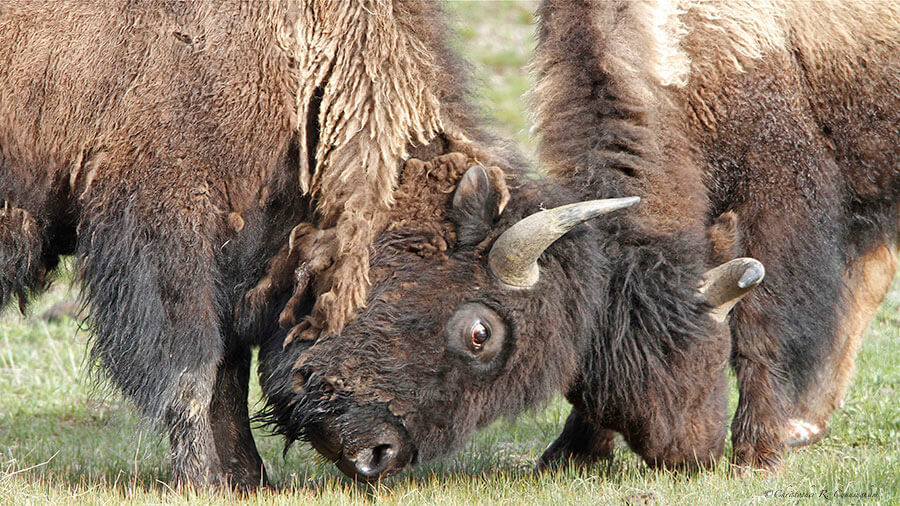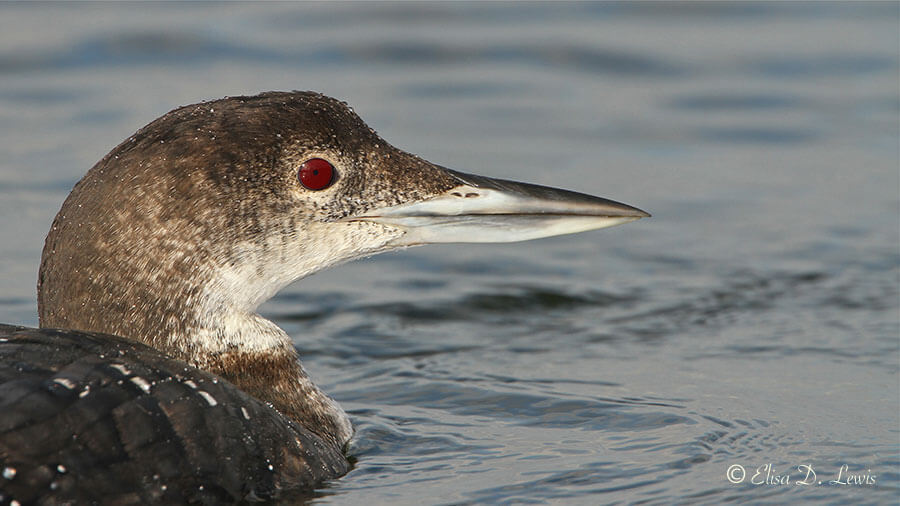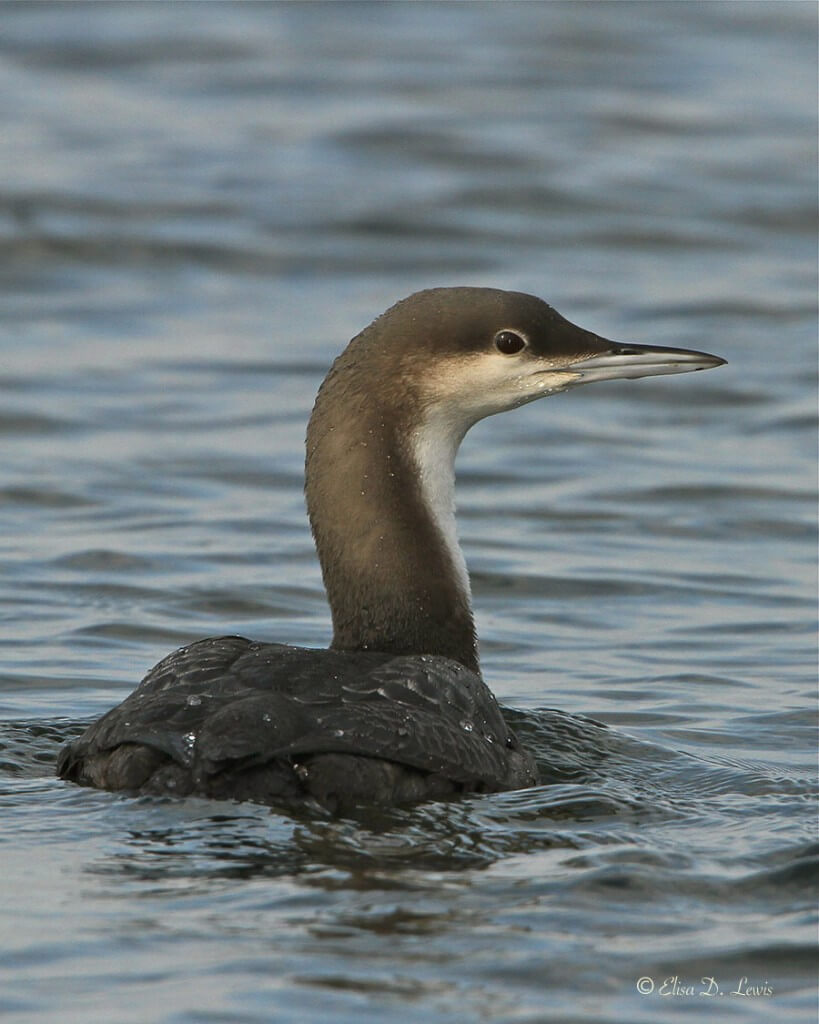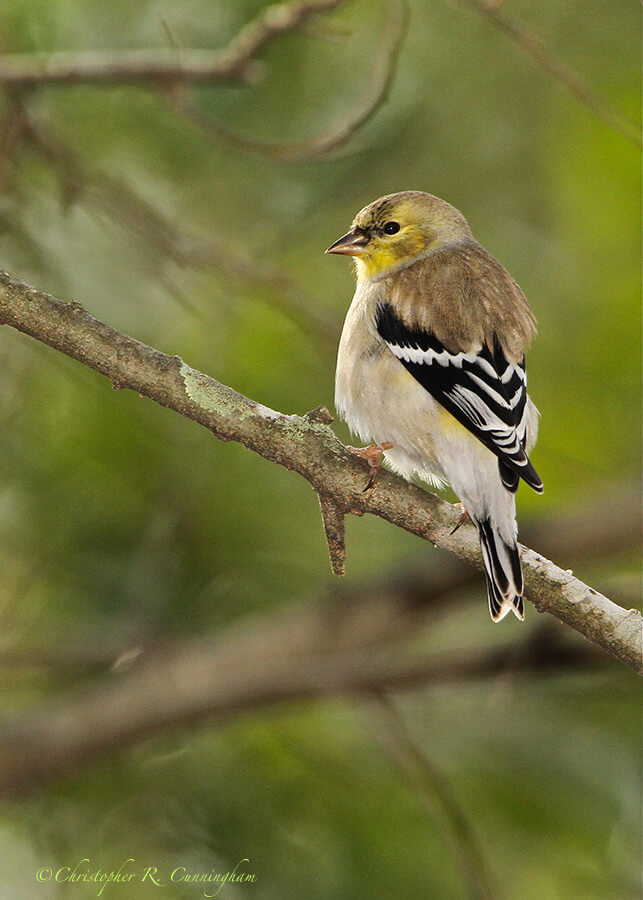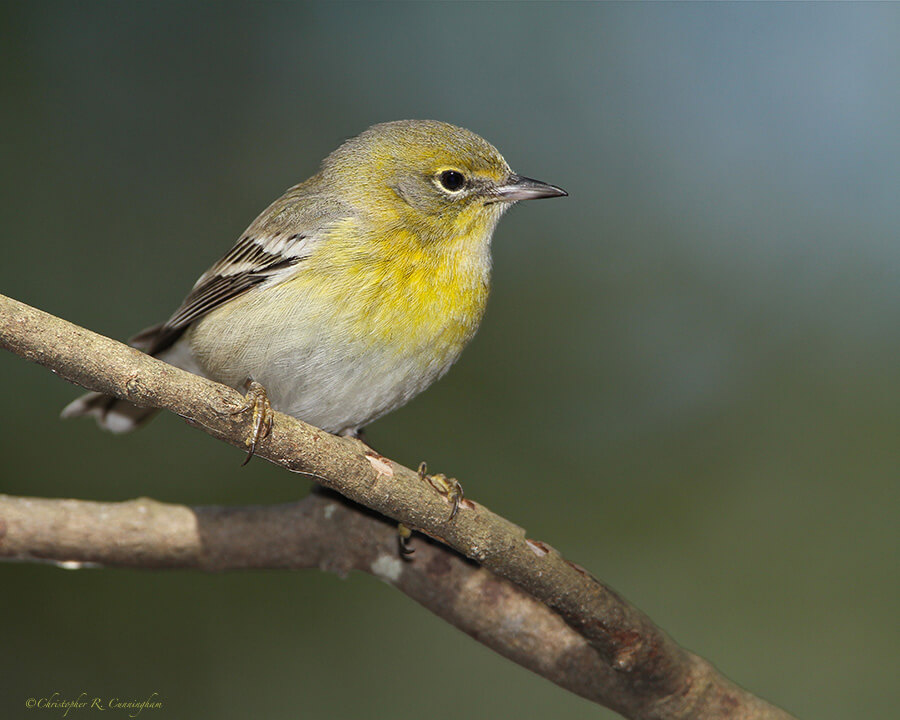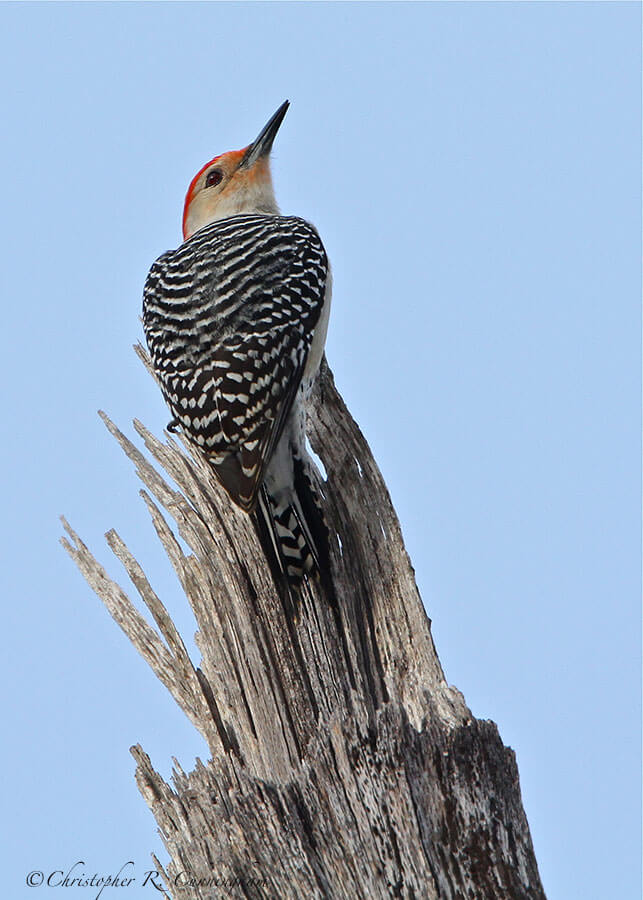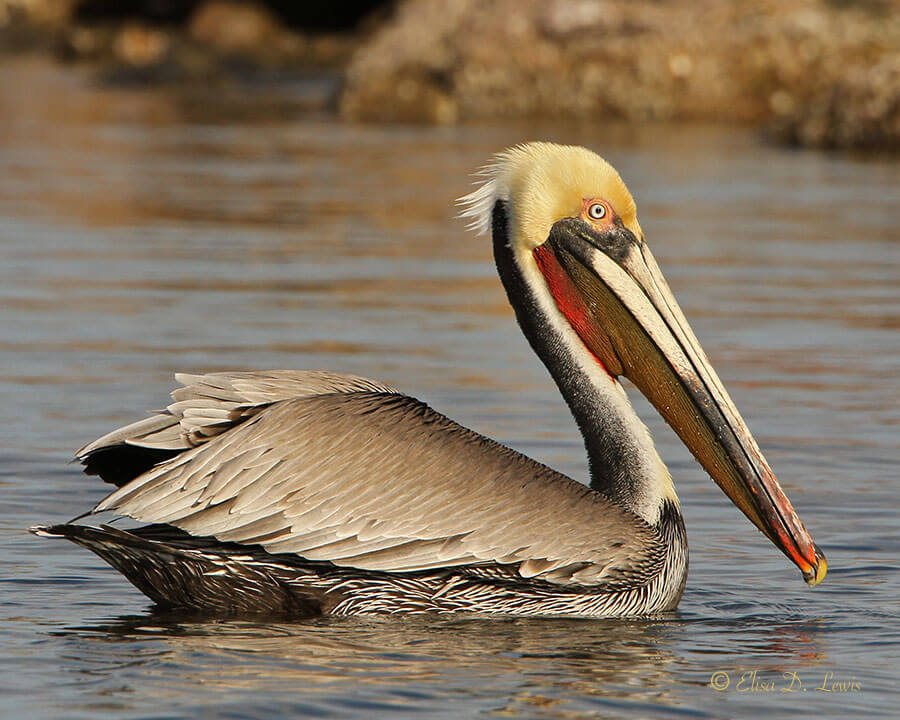
While we were watching the loons at Offats Bayou in early February, a Brown Pelican paddled through my viewfinder. Odd, I thought — red pouch. After much hopeful discussion and reference checking we were excited to think that we had a California Brown Pelican visiting our patch of the Texas Gulf Coast. There are five subspecies of Brown Pelican — the California, Caribbean, Eastern (ours), Galapagos, and Ecuador Brown Pelicans. The gular pouch of the Eastern Brown Pelican (Pelicanus occidentals carolinensis) is most often described as dark gray or blackish, whereas in the California Brown Pelican (Pelicanus occidentals californicus) the pouch is a distinctive red and olive. The difference has been used to distinguish the two subspecies.
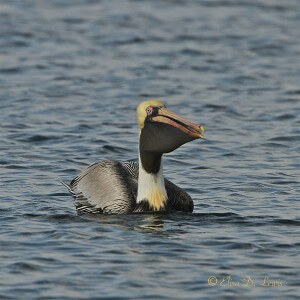
As is often the case, things aren’t always as they seem (I love it when this happens!). Upon further investigation, I stumbled upon a post in Sibley Guides online which explains that red pouches seem to also be a part of the Eastern Brown Pelican gene pool based on field observations. The post includes speculation on whether these genes were introduced during Brown Pelican reintroduction in the 70’s or whether it’s really a matter of natural gene flow. Perhaps it’s a little from column A and a little from column B. The observation poses a bunch of new questions to investigate!
Strangely enough this topic was just mentioned on ABA Birding News this past Thursday. A birder/photographer documented a banded Brown Pelican with a red pouch and the band code indicated it was banded as a flightless juvenile in Louisiana — photographic proof that we can no longer use pouch color alone to differentiate Pacific vs. Atlantic subspecies! It seems our “visitor” is most likely a Texan after all.
It is worth noting that this “pelican brief” was brought to you by citizen science and the power of the internet to access and share data. Enthusiasts and amateur scientists interested in birds and their ecology contribute to ornithology in meaningful ways. Opportunities are out there for birders of all ages. You can participate nationally with Cornell All About Birds Citizen Science projects, Audubon Citizen Science, or eBird – the amazing biodiversity data resource powered by amateur and professional bird watchers alike launched by the Cornell Lab of Ornithology and National Audubon Society in 2002.
Go exploring!
© 2013 Elisa D. Lewis. All rights reserved. No text or images may be duplicated or distributed without permission.
